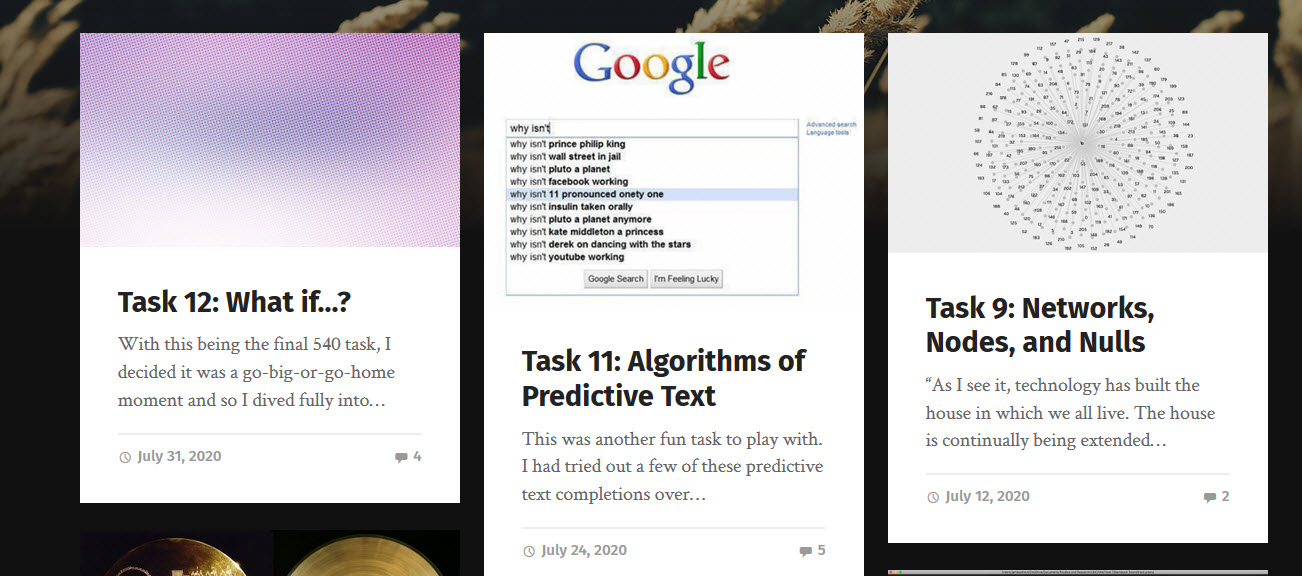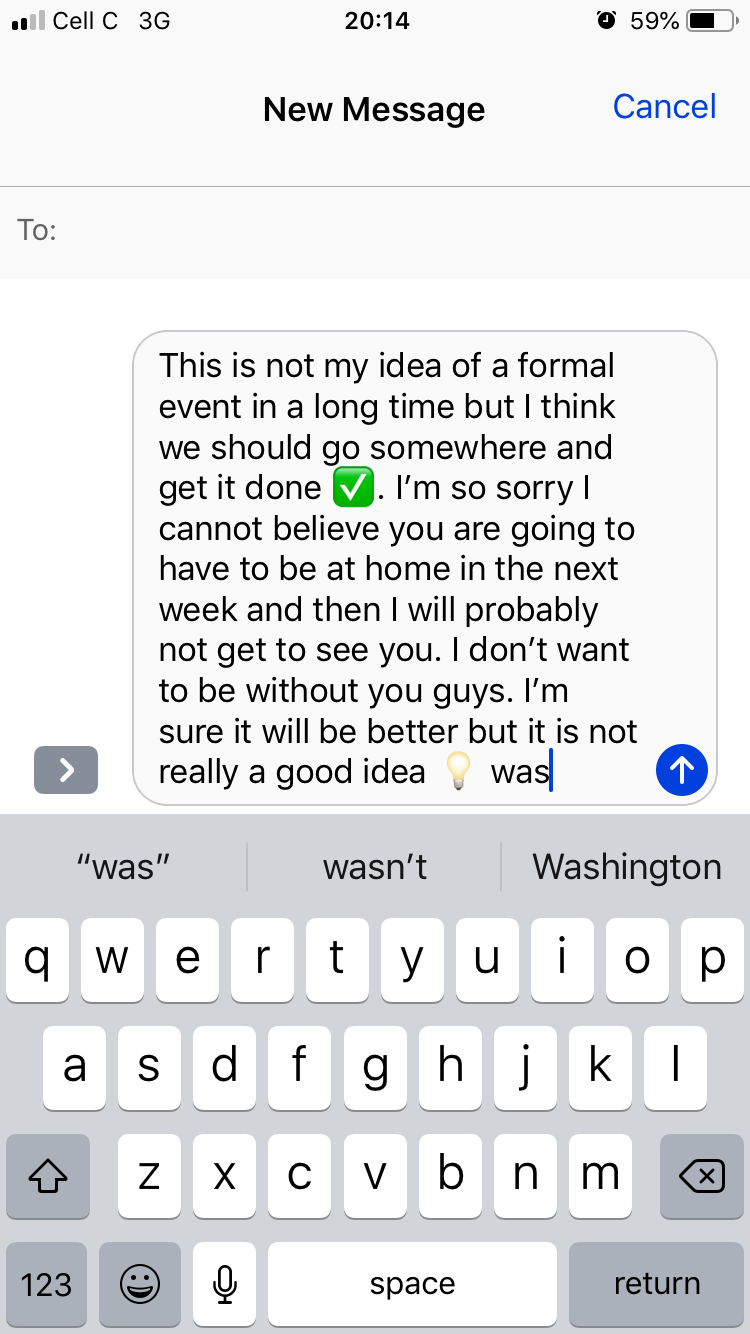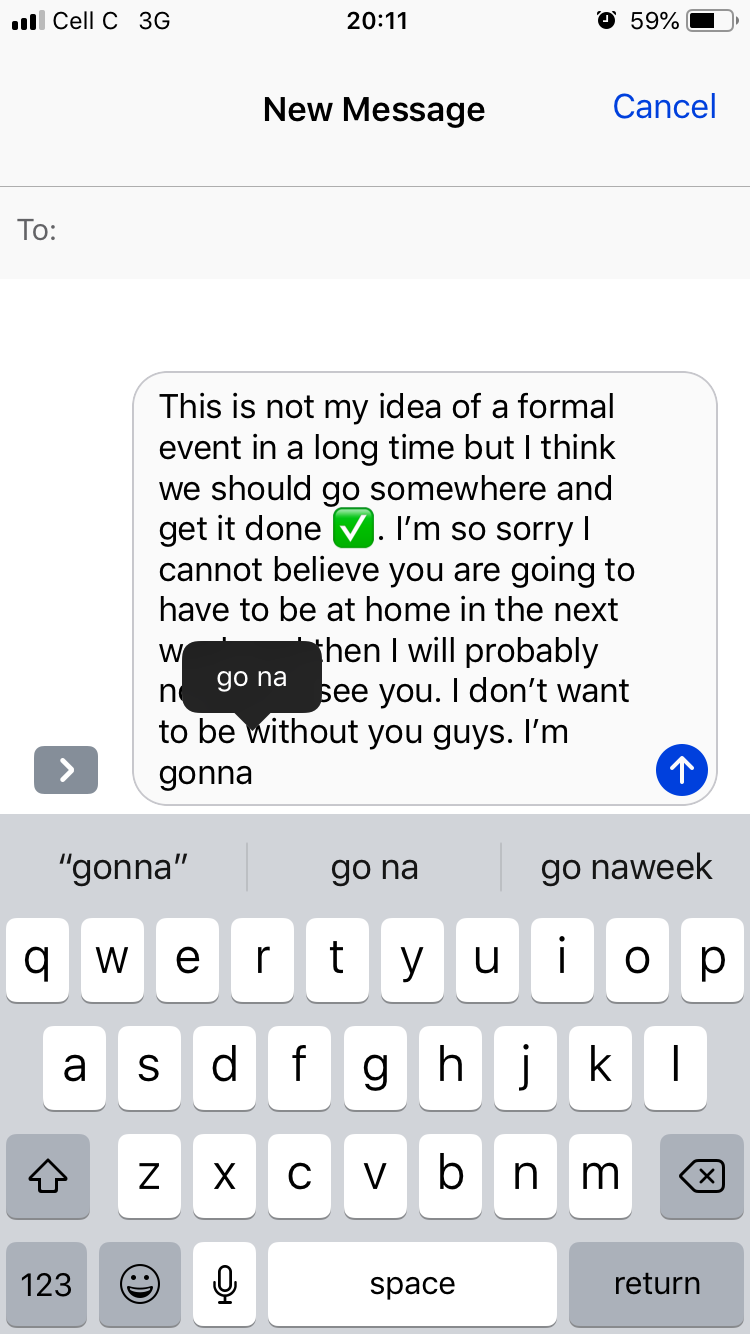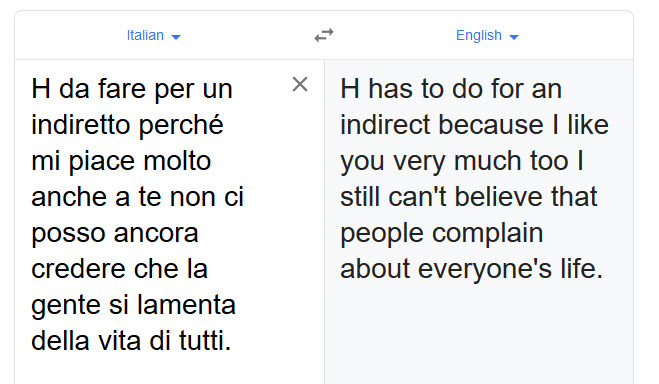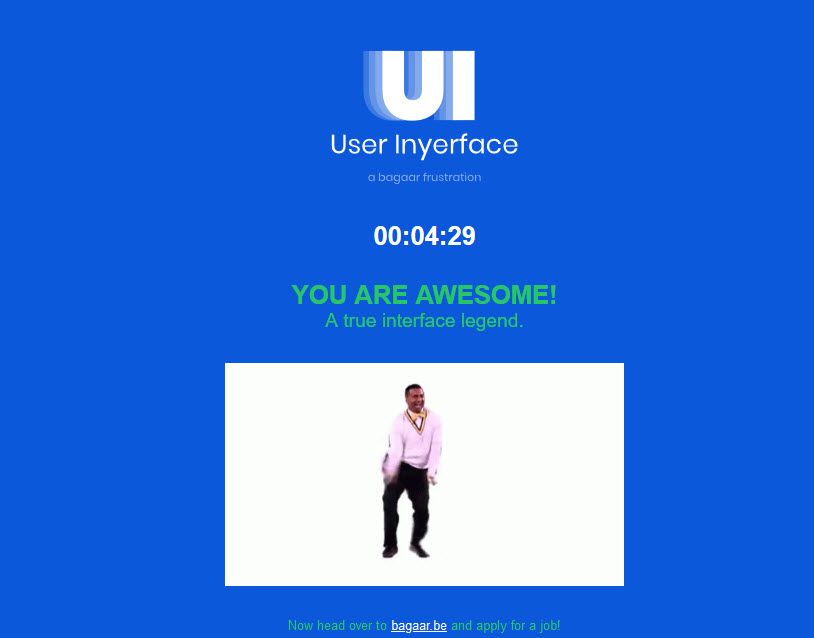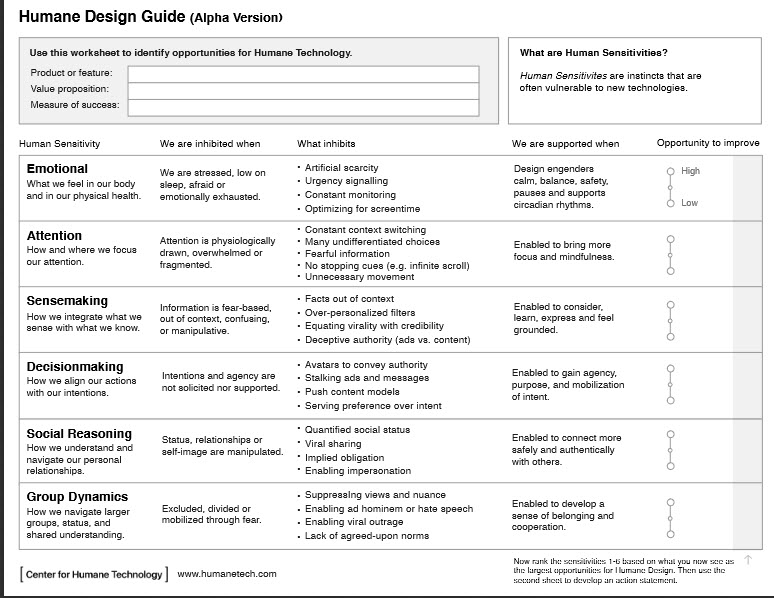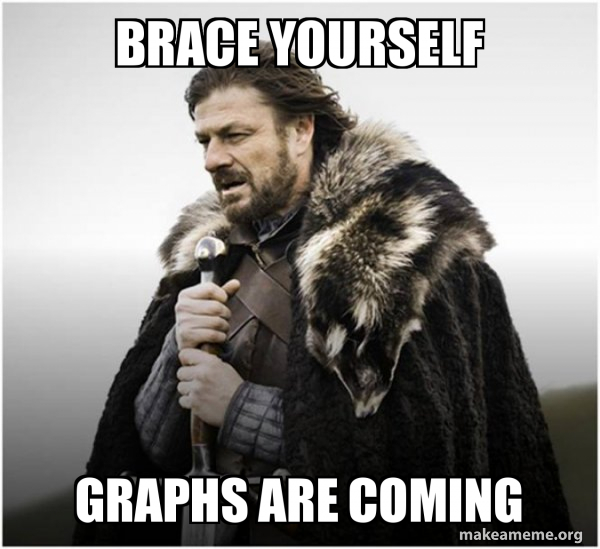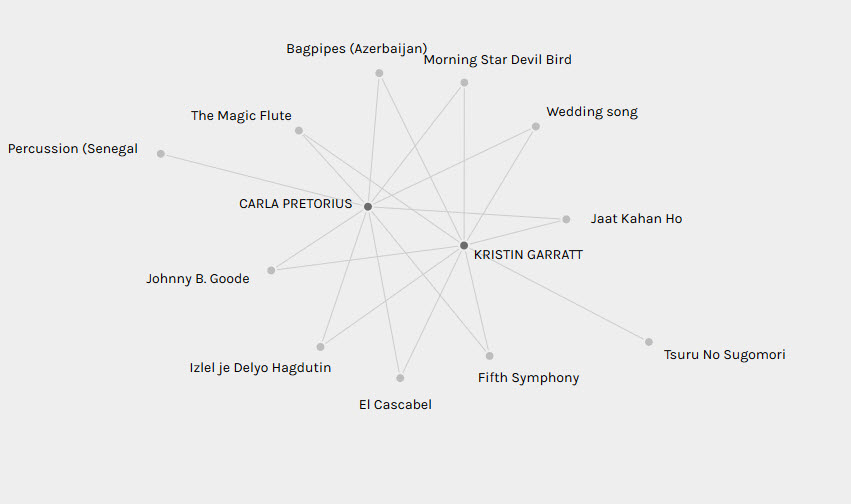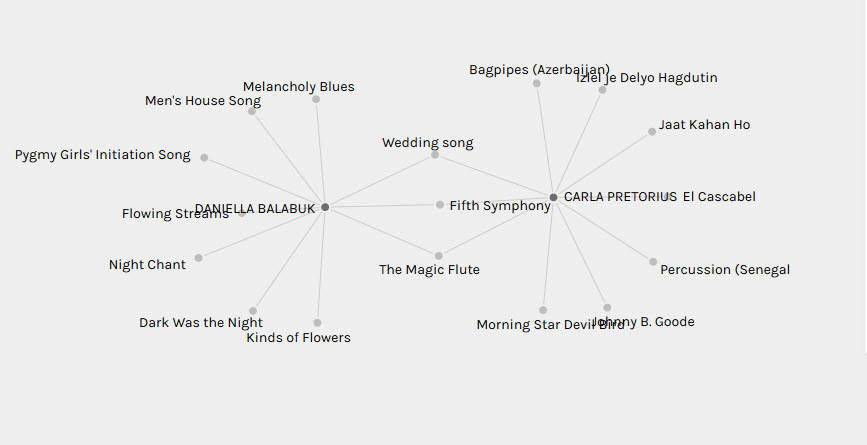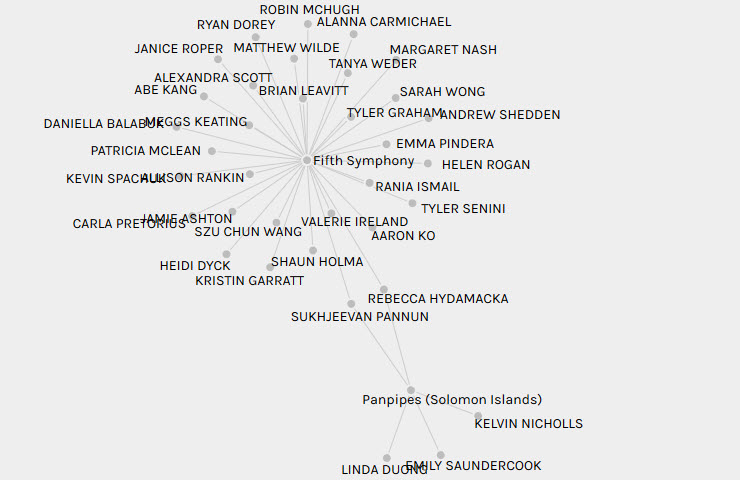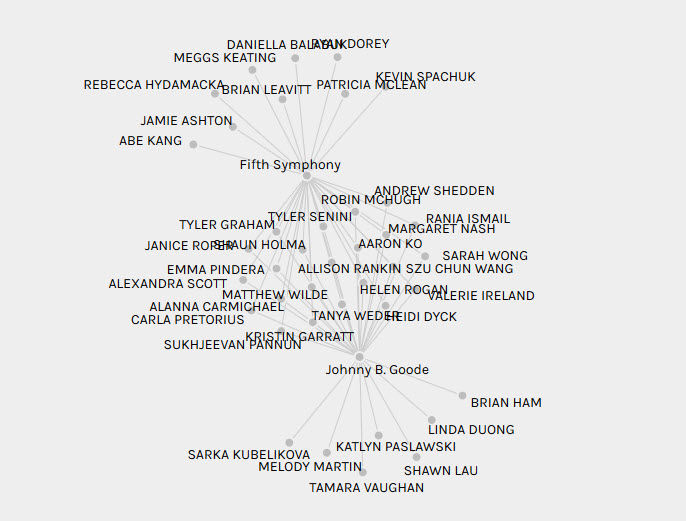For my final linking assignment I chose to look at Tanya’s post for Task 12. I really like Tanya’s layout on her site. She has chosen to host her blog outside of the WordPress platform and so you find yourself on a Weebly site with a beautiful flow between the posts. The first impression of the site is the spaciousness that the website format offers over the WordPress blog spaces. The simple design change has a huge effect on my experience of Tanya’s blog space. It just feels as if you have space to breathe as opposed to the cramped feeling I experience when I look at WordPress sites. Having chosen to host her blog on a website like Weebly also allows Tanya to take advantage of more fluid integration of media into her posts in a way that again just seems very visually appealing.
Since my own site is hosted on WordPress, I have none of these affordances. However, an element that I missed on Tanya’s site was the comments section so prominently displayed on WordPress blog sites. This might be because websites aren’t designed to incorporate comment sections for every paragraph or topic on display. It would hinder the experience of scrolling through the visually curated information on display. Once displayed, comments are much smaller in contrast to the post or task’s text on the website, another indicator that the website’s design might not place as much emphasis on comments as the blog sites do. I feel as if the WordPress site better facilitates discussion through comments than what would be possible on a website. I also really struggled to find anything that could connect the website to its author. There was a home space with an about section but I couldn’t find Tanya’s name on the site which made the space feel a little impersonal.
Why I wanted to contrast Task 12 specifically in this assignment was because I felt as if Tanya’s stories bore a similar theme to my own. We had told similar tales of a future where technology becomes more integrated in the human body through brain implants albeit we chose different mediums to tell our stories. Tanya had made use of audio to tell her first person story and I had constructed a narrative story using Twine (a text based medium). Both I feel were equally successful in conveying our fears of this kind of future but what I particularly liked about Tanya’s post was her focus on the personal. She told her story from a first person perspective of someone experiencing the implanted technology whereas my story was more removed with one of my characters simply discussing his company that designs similar implants. It was this personal touch that added a different dimension to her story that had me easily connect with it and want to listen on. There just is something very special about oral storytelling that speaks to the human mind and heart. The messages conveyed in her tone and the other sounds included in the audio adds so much more to the story than what would have been conveyed through just what was spoken. She also crafted several themes in her story which adds a level of sophistication to the narrative which I think my own lack somewhat. I had a very straightforward story to tell with one message whereas this one was intricately planned and weaved together.
